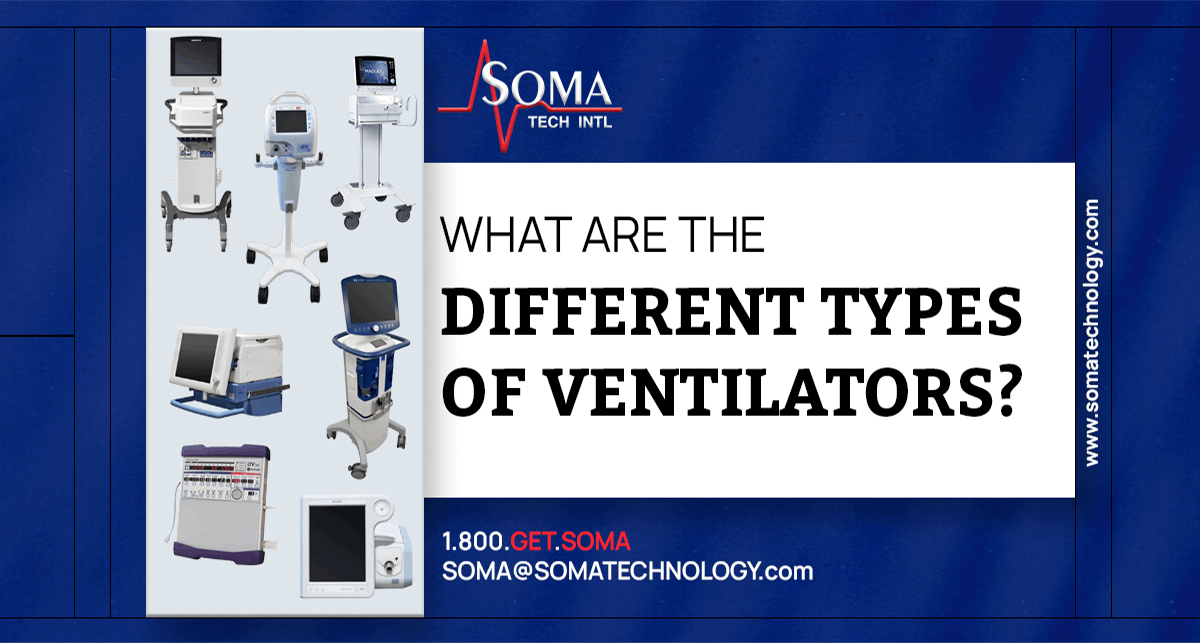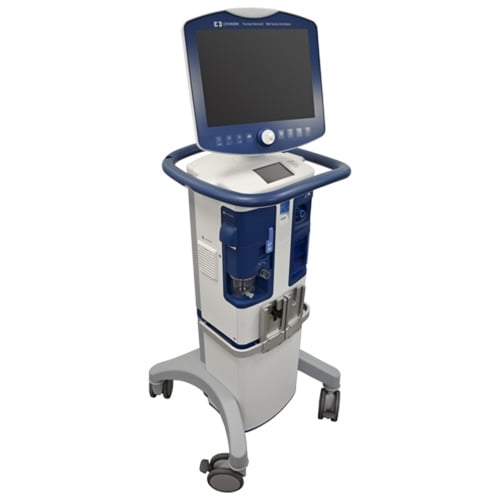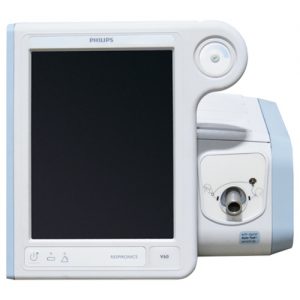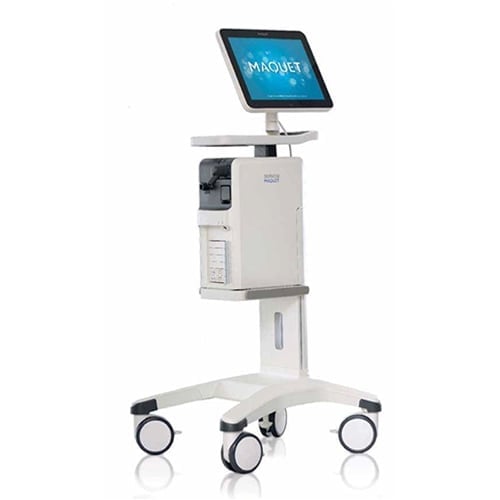What Are the Different Types of Ventilators?
November 29, 2023
Understanding Ventilators – What is a ventilator?
Ventilators play a crucial role in sustaining life for individuals facing respiratory challenges. These sophisticated medical devices deliver controlled amounts of air or oxygen into the lungs and expel carbon dioxide, thereby assisting patients who struggle to breathe independently. Ventilators are employed in various clinical scenarios, ranging from intensive care units to emergency rooms. They are essential tools for managing conditions such as acute respiratory distress syndrome (ARDS), pneumonia, and other respiratory ailments. Understanding the intricacies of how ventilators work is pivotal for healthcare professionals, as it underscores the significance of these life-supporting devices in providing critical care and aiding patients in their journey toward recovery.
What Are The Different Types of Ventilators?
Invasive Ventilators –
An invasive ventilator provides critical respiratory support by directly intervening in the patient’s airway. It necessitates the insertion of a breathing tube into the patient’s mouth, nose, or through a tracheostomy in the neck. This tube establishes a secure connection to the patient’s lungs, allowing the ventilator to take control of both inhalation and exhalation processes. Equipped with advanced sensors and customizable settings, invasive ventilators offer healthcare professionals precise control over the volume and rate of airflow, ensuring tailored respiratory assistance. Typically utilized in intensive care settings, these ventilators are vital for patients undergoing surgery, facing severe respiratory distress, or requiring intensive therapeutic interventions.
Non-Invasive Ventilators –
In contrast to invasive ventilators, non-invasive ventilators deliver respiratory support without the need for an inserted breathing tube. Instead, these devices provide assistance through a mask or similar interface placed over the patient’s nose or mouth. Non-invasive ventilation is often employed in less critical scenarios, such as in the treatment of sleep apnea, chronic obstructive pulmonary disease (COPD), or cases where invasive measures may pose additional risks. Although non-invasive ventilators offer a more comfortable experience for patients, they may have limitations in terms of the level of respiratory support they can provide. While they are beneficial for certain conditions, they might not be suitable for patients with more severe respiratory challenges. The choice between invasive and non-invasive ventilation depends on the specific medical needs and conditions of the patient, highlighting the importance of personalized care in respiratory management.
Popular Ventilators

Medtronic Puritan Bennett 980
The Puritan Bennett 980 can be used for intra-hospital transport to provide continuous ventilatory support with oxygen and compressed medical air from an internal air compressor or external air source. This Medtronic ventilator delivers oxygen concentrations from 21% to 100%. The PB980 can administer ventilatory support to patients invasively or non-invasively who require positive pressure ventilation, assist/control, SIMV, or spontaneous modes of ventilation. It can be used in areas such as general care floors, operating rooms, and intensive care units. This Puritan Bennett Ventilator also has a battery backup that provides power in case AC power is lost. Prior versions of the Puritan Bennett ventilation systems include the Puritan Bennett 840.

Philips Respironics V60
The Philips Respironics V60 is an assist ventilator intended to augment patient breathing. It is intended for spontaneously breathing individuals who require mechanical ventilation. For example, patients with respiratory failure, chronic respiratory insufficiency, or obstructive sleep apnea in a hospital or other institutional setting under the direction of a physician. The Respironics Philips V60 is intended to support pediatric patients weighing 44 lbs (20 kgs) or greater adult patients. Because every breath matters and every breath is different, patients need a ventilator that always follows their breathing pattern, whatever their understanding. This Philips Ventilator uses auto-adaptive technology to help ensure patient synchrony and therapy acceptance. The improved signal processing technology is finely tuned for both adult and pediatric patients.

Getinge Servo-u
The Getinge Maquet Servo-u is a ventilator that is intended for intensive care. The Servo-U gives the medical professional more ways to tailor each ventilation treatment to each patient while still protecting the integrity of their lungs. these phases of ventilation include controlled, supported, non-invasive, and spontaneous breathing. With a larger touchscreen display, it is easy to view and adjust the patient’s parameters. The Display screen can be rotated 360 degrees so it can be read no matter what side of the patient’s bed it is put on. Prior versions of this Getinge ventilation system include the Maquet Servo-i.
Requesting Different Types of Ventilators From Soma
Soma Tech Intl has a large stock of ventilators that are not listed in this article. You can check out our full range of ventilators that we sell. In addition to ventilators, we sell all types of medical equipment for surgical centers and hospitals. Soma not only sells medical equipment, but also has different rental options that include short-term, long-term, and rent-to-own. Some facilities choose to rent before buying because they want to try out a new piece of equipment. Others rent because they are not sure if they are going to need the equipment fully, or just during times of an increased patient census. If you would like to rent, rent-to-own, or purchase, please contact our sales representatives. They can be reached by email, phone number, at [email protected], or 1-800-438-7662. Please let us know if you have questions about any of the equipment that you previously read about.
Looking For Ventilator Accessories or Parts?
Soma stocks a wide variety of accessories and spare parts for all equipment that we sell. We have many ventilator accessories and parts in our in-house parts department. You can find our large listing on our medical parts website at somamedicalparts.com. Common spare parts that are purchased for ventilators include leak detectors, power supply modules, cable service kits, pressure switches, driver tubes, and many more! Call or email our parts department directly at 1-800-438-7662 or [email protected].
Final Thoughts
As we wrap up our blog about ventilators, with the Puritan Bennett 980, Philips V60, and Getinge Maquet Servo-u, we’re eager to hear your feedback and input on which is your preferred model. Have you found particular features that enhance your usage, or are there aspects you wish could be improved? Perhaps you have familiarity with different ventilator brands that have left a lasting impression. Feel free to share insights about the ventilation systems stocked at your hospital. Are there specific reasons behind the choices made in selecting these systems? And for those who manage inventory, do you often find yourself ordering spare parts for ventilators?
We encourage you to drop your thoughts and experiences in the comments below! Your valuable input contributes to a dynamic exchange of knowledge and helps the community navigate the diverse landscape of ventilator technology.
Explore Other Blog Items By Category
Recent Posts

EKG vs ECG | What’s the Difference Between ECG and EKG?

Surgical Microscope Rentals

